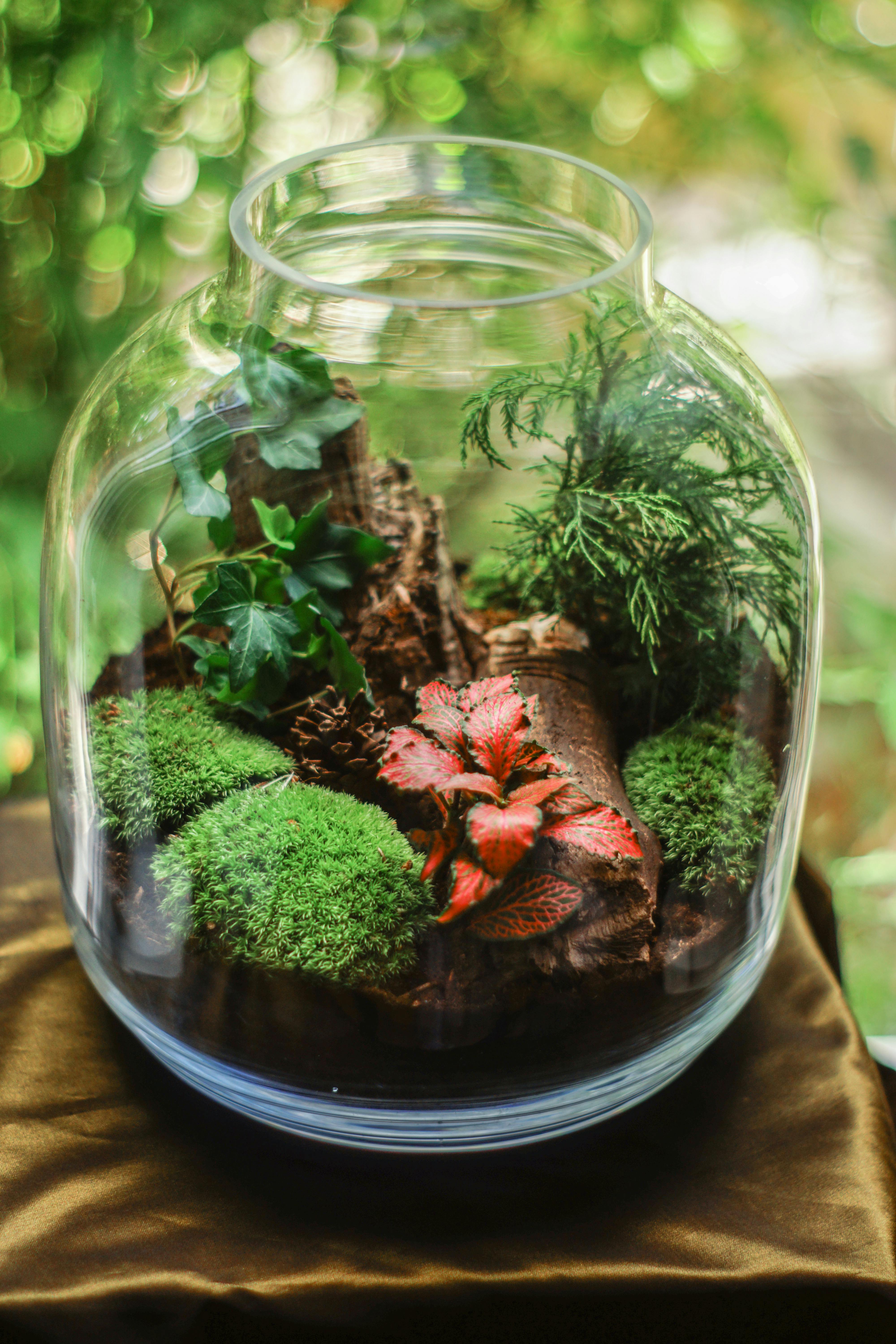Terrarium Couture: Elevating Miniature Ecosystems to Fashion-Forward Decor
In a world where living spaces are shrinking and the desire for nature is growing, terrarium couture has emerged as a captivating trend that marries high fashion with miniature ecosystems. This innovative approach to indoor gardening is transforming the way we think about home decor, bringing a touch of avant-garde style to even the smallest of spaces. As urban dwellers seek to reconnect with nature without sacrificing style, terrarium couture offers a solution that is both visually stunning and ecologically mindful.

Terrarium couture emerged as designers began to see these miniature ecosystems as blank canvases for creative expression. Drawing inspiration from runway fashion, contemporary art, and cutting-edge architecture, these artisans began crafting terrariums that were as much about aesthetics as they were about plant life. The result is a new genre of home decor that pushes the boundaries of what a terrarium can be.
Haute Couture Meets Horticulture
At the heart of terrarium couture is the idea that these miniature landscapes can be as meticulously designed and curated as a haute couture gown. Designers in this field are not just gardeners; they are visionaries who see beyond the traditional constraints of terrarium design. They incorporate unusual materials, experiment with unconventional shapes, and even integrate technology to create living sculptures that captivate and inspire.
One of the hallmarks of terrarium couture is the use of high-end materials. Crystal-clear, hand-blown glass vessels replace standard containers, while precious metals like gold and silver are used for accents and embellishments. Some designers even incorporate elements of jewelry design, creating terrariums that double as statement pieces, complete with gemstones and intricate metalwork.
The Art of Micro-Landscaping
Terrarium couture takes the concept of landscaping and shrinks it down to a miniature scale, requiring a level of precision and attention to detail that rivals the most intricate watchmaking. Designers carefully select each plant, considering not just its care requirements but also its aesthetic contribution to the overall composition.
The plants themselves are often rare or exotic specimens, chosen for their unique textures, colors, and growth patterns. Miniature orchids, carnivorous plants, and even bonsai trees find their way into these tiny ecosystems. But it’s not just about the plants – every grain of sand, each pebble, and every piece of driftwood is carefully considered and placed with artistic intent.
Fusion of Technology and Nature
In keeping with the innovative spirit of couture design, terrarium artisans are increasingly incorporating technology into their creations. LED lighting systems that mimic natural daylight cycles are seamlessly integrated into the terrariums, allowing for the cultivation of plants that would otherwise be challenging to grow indoors. Some designers go even further, incorporating motion sensors, misting systems, and even augmented reality features that allow viewers to interact with the terrarium in new and exciting ways.
This fusion of nature and technology not only enhances the visual appeal of the terrariums but also improves their functionality. Climate control systems ensure that each plant receives the optimal conditions for growth, while smart sensors monitor soil moisture and nutrient levels, alerting owners when care is needed.
Sustainability in Style
Despite its focus on high-end design, terrarium couture has a strong undercurrent of sustainability. Many designers in this field are committed to using eco-friendly materials and practices. Recycled glass, sustainable woods, and even repurposed industrial materials find new life in these artistic creations.
Moreover, the self-contained nature of terrariums means they require minimal water and care, making them an environmentally conscious choice for home decor. Some designers take this a step further by creating terrariums that serve as miniature ecosystems, complete with tiny creatures like isopods that help maintain the health of the enclosed environment.
The Rise of Terrarium Couture in Interior Design
As terrarium couture gains popularity, it’s finding its way into a variety of interior design contexts. High-end hotels and restaurants are commissioning custom terrariums as focal points for their spaces, while fashion boutiques are using them to create immersive, nature-inspired shopping experiences.
In residential design, terrarium couture is being embraced as a way to bring a touch of luxury and nature into urban apartments and minimalist homes. These living art pieces serve as conversation starters and can be tailored to complement any interior design style, from ultra-modern to bohemian chic.
The Future of Terrarium Couture
As the boundaries between art, fashion, and nature continue to blur, terrarium couture is poised to evolve in exciting new directions. Emerging technologies like 3D printing are opening up new possibilities for creating complex, organic structures within terrariums. Meanwhile, advances in plant science are enabling the cultivation of even more exotic and visually striking species in these miniature environments.
Some designers are exploring the concept of wearable terrariums, creating jewelry and accessories that incorporate living plants. Others are scaling up, creating room-sized installations that blur the line between terrarium and immersive art experience.
Cultivating Your Own Couture Creation
While high-end terrarium couture can be a significant investment, the principles behind this trend can be adapted for home enthusiasts. By focusing on unique container choices, carefully curated plant selections, and attention to detail in arrangement and care, anyone can create a terrarium that embodies the spirit of couture design.
The key is to think beyond the traditional and to view your terrarium as a work of art. Experiment with unusual color combinations, incorporate unexpected elements like miniature sculptures or geodes, and don’t be afraid to let your personal style shine through.
In conclusion, terrarium couture represents a fascinating intersection of fashion, art, and nature. It challenges our perceptions of what indoor gardening can be and offers a fresh, stylish approach to bringing the outdoors in. As urban living continues to evolve, these miniature ecosystems stand as testament to human creativity and our enduring connection to the natural world – all wrapped up in a package of unparalleled style and sophistication.





